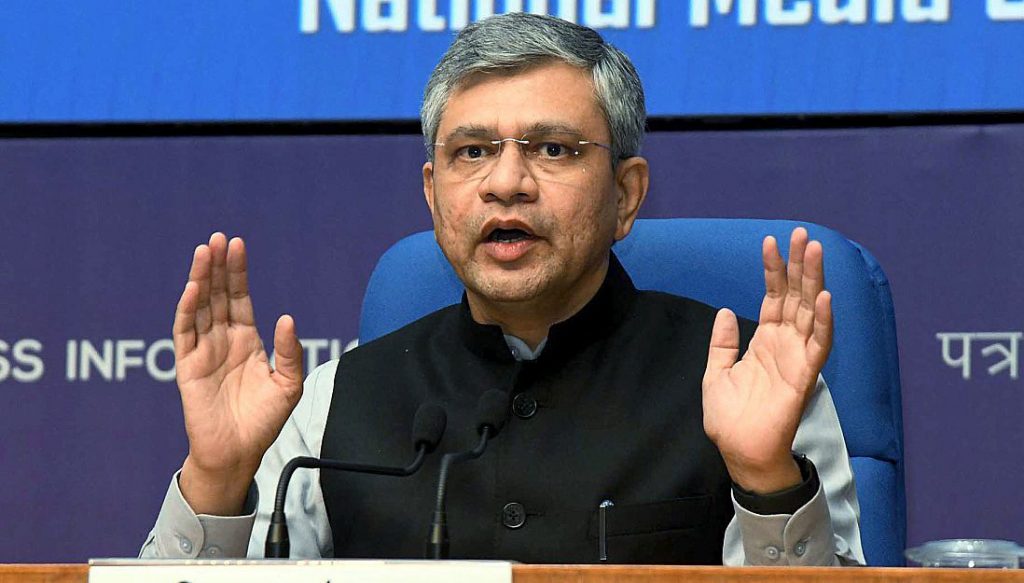New Delhi: India has proven its mettle with its indigenous 4G/5G technology stack which is “now ready” and the country is poised to emerge as a major telecom technology exporter to the world in the coming three years, Communications Minister Ashwini Vaishnaw said Saturday.
Speaking at the Economic Times Global Business Summit 2023, Vaishnaw, who is also the Minister for Railways, categorically said there is no programme for the privatisation of the national transporter.
The 5G services were launched October 1, 2022, and within a span of 100 days have been rolled out in 200-plus cities. The sheer speed of rollout has been appreciated by industry leaders globally and is being described in many international forums as the “fastest deployment happening anywhere in the world”, he said.
Vaishnaw highlighted the population-scale solutions being tested on India stack, across platforms such as payments, healthcare and identity. Each of these platforms is powerful in itself, but together become a dynamic force that can solve “any major problem in the world”.
The minister said India is set to emerge as a telecom technology exporter to the world in the next three years.
“Today there are two Indian companies that are exporting to the world…Telecom gear. In the coming three years, we will see India as a major telecom technology exporter in the world,” Vaishnaw said.
The minister talked of the rapid strides taken by India in developing its own 4G and 5G technology stack, a feat that caught the attention of the world.
“The stack is now ready. It was initially tested for 1 million simultaneous calls, then for 5 million, and now it has been tested for 10 million simultaneous calls,” he said terming it a “phenomenal success”.
At least 9-10 countries want to try it out, he added.
The minister gave a presentation outlining key initiatives under his three ministries of telecom, IT and Railways.
For Railways, the focus is on transforming passenger experience, he said as he presented slides on how railways is redeveloping stations and terminals (New Delhi, Ahmedabad, Kanpur, Jaipur among others) with modern and futuristic design blueprint, and in the process creating new urban spaces while also preserving rich heritage.
The minister also gave an overview on the Vande Bharat train, the indigenous train protection system Kavach and progress on the bullet train project.
To a question on the past talks around private freight rail corridors to boost logistics, the minister said “there is no programme for Railway privatisation”.
“In a country where we have 1.35 billion people, 8 billion people moving every year on Railways, we thought that it is prudent to learn from the experience of others, and keep it within the Government set-up,” Vaishnaw said.
To another query on dedicated freight corridor for foodgrains, the minister explained that when it comes to transport economics it is important not to divide assets between different applications.
“Today, the thought process has got very refined, and we are adding close to 4500 km of network every year, which amounts to 12 km of new tracks per day. So we have to increase the capacity to such a large extent that there is enough capacity for foodgrains, enough for coal, small parcels, and every kind of cargo,” he said.
While Railways had been consistently losing market share over the last 50-60 years, it has started clawing it back.
“The lowest point was 27 per cent. I am happy to share that from the 27 per cent level, last year Railways increased to 28 per cent, this year we are doing close to 29-29.5 per cent, and in the coming 2-3 years Railways will go towards 35 per cent market share,” he said.
People will choose between transport via road, railways or air based on the distance to be travelled, and “there will be enough for everybody”.
“The country will have enough for everybody, is my point. Up to 250 kilometres road is very good, 250 to 1000 kilometres railway is the ideal mode. Beyond 1000 kilometres air will be the ideal mode. So there will be enough for everybody,” the minister said.
PTI
